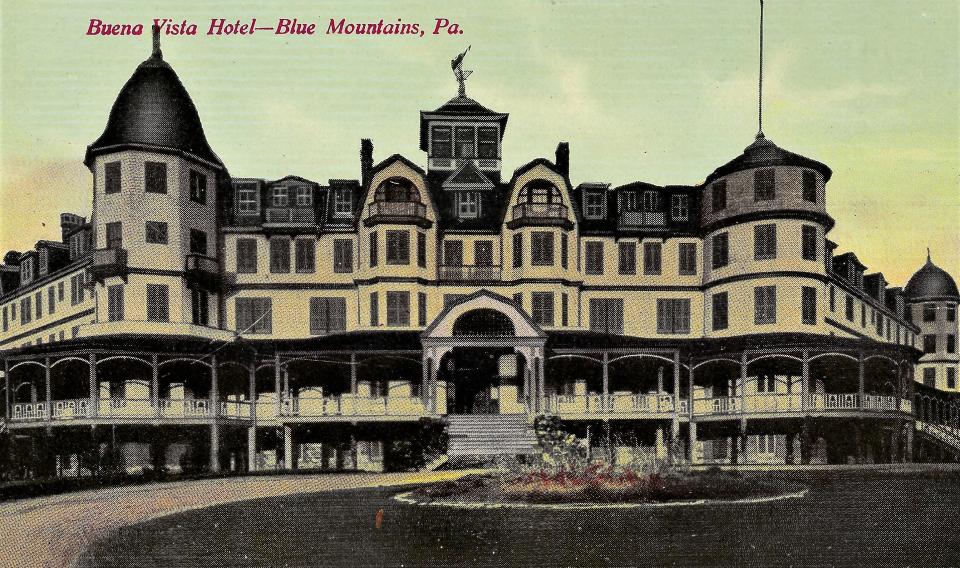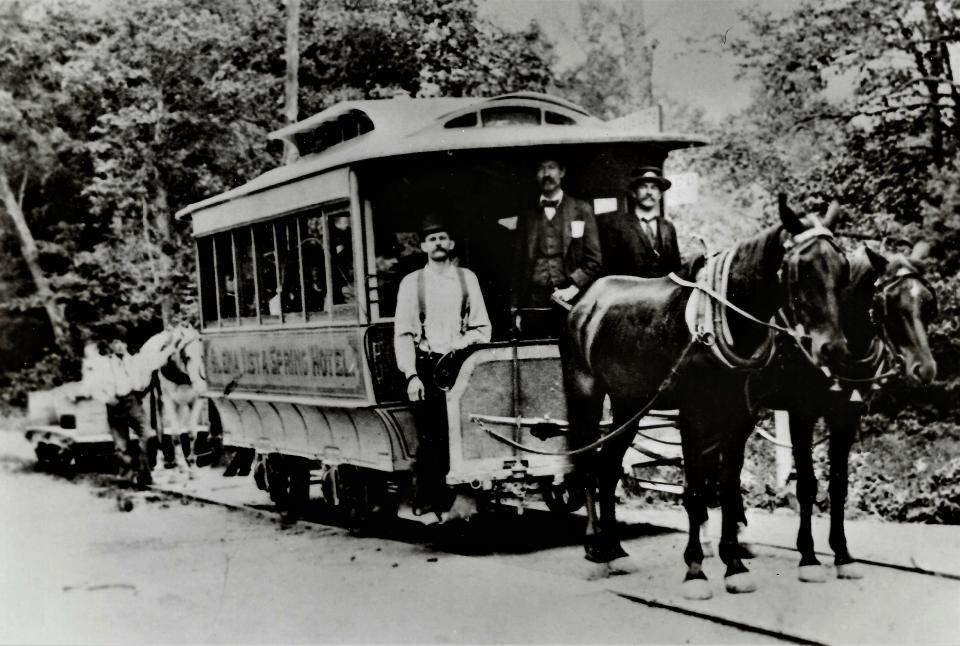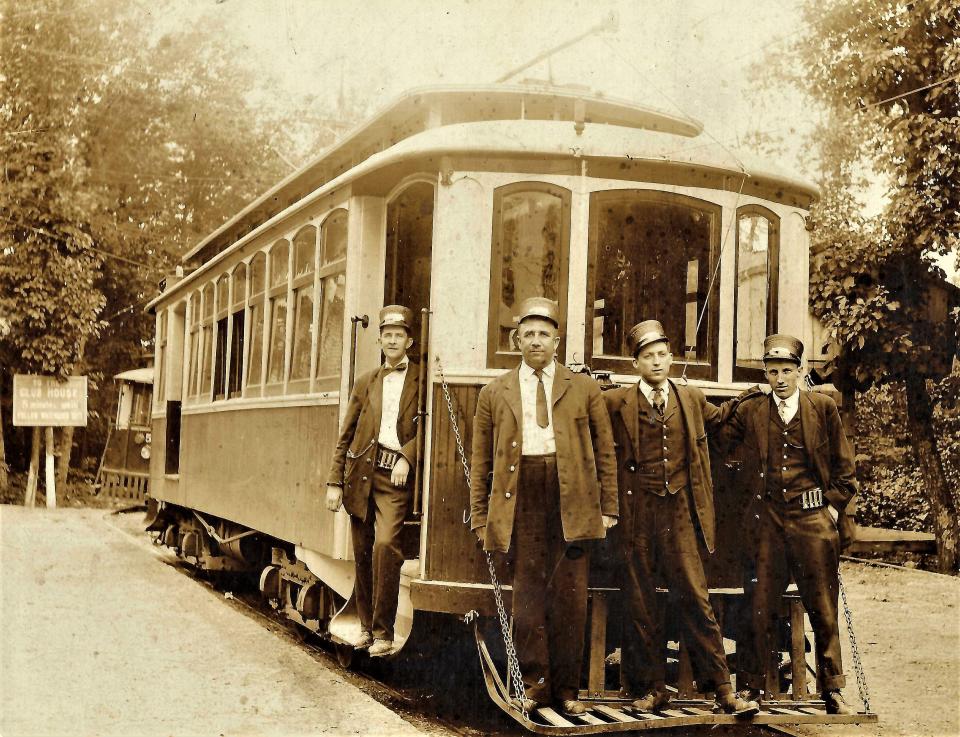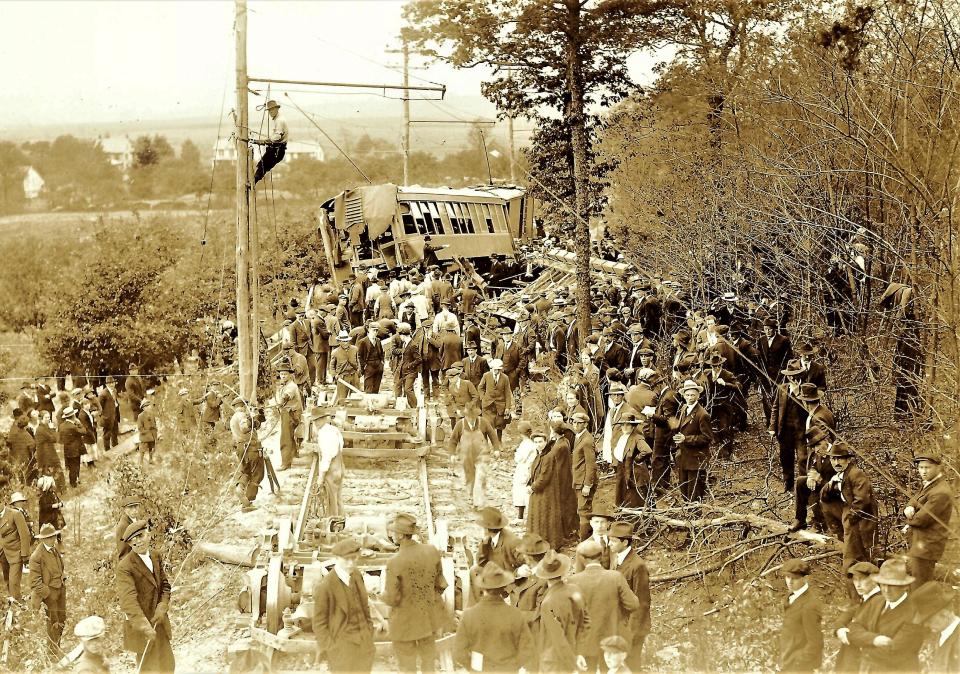Pen Mar transportation: Trolley cars on the mountain
During the mid-1870s, John M. Hood was president of the Western Maryland Railroad, and as all good managers do, he was looking to expand business and maximize revenue.
Through Hood's guidance and involvement, a truly magnificent amusement park was being planned in 1877 to be situated in the beautiful Blue Ridge Mountains near the Western Maryland Railroad bordering Pennsylvania and Maryland.
This great development led people from nearby cities and towns to the mountain in search of a piece of property to build their own special summer home in the area known as “Pen Mar.”

The days of building many cottages, inns and hotels was intense, with each structure being unique in its own design and features. One of the hotels — Buena Vista Spring Hotel — offered a very special service.
This hotel was built in 1890 and could accommodate up to 500 guests at one time. The special service was a two-hitch horse-drawn trolley car that ran from the hotel to the Buena Vista Spring Railroad Station on the Western Maryland Railroad line.
This small trolley car would make five 3-mile trips per day from the hotel to the railroad station and was always known to be on time for the passengers.

The sides of this little trolley car had “Buena Vista Springs Hotel “ painted on it. There was also a horse-drawn cart for the guests' baggage that would follow the trolley car on each trip. The horses, upon their arrival at the train station or hotel, were unhitched and taken to the opposite end of the car and attached for their next trip.
Two of the operators of this trolley car were William Hovis and Benjamin Benchoff. This unique transportation was only operational from spring to fall. The horse-drawn trolley car ceased operations in 1912, but it was the first of the trolley cars on the mountain.
After the end of World War II, business started to really decline and the owners sold the marvelous hotel to an interested group from Baltimore. The name was changed to Bellarmine Hall. Sadly, during the early morning hours of Dec. 8, 1967, a fire destroyed the unoccupied 77-year-old landmark.

The residents of Franklin County who wanted an easy and enjoyable trip to the famous Pen Mar Park would soon see the creation of an electric street railway. The Chambersburg, Greencastle & Waynesboro Electric Street Railway was chartered on June 17, 1901, and in time, this new service would operate 30 miles running from Chambersburg to Pen Mar Park.
The first trolley car of the CG&W to reach Pen Mar Park from Waynesboro happened Nov 24, 1903. The round trip fare would've cost you 20 cents. Thousands of passengers for nearly 30 years would fill multiple trolley cars that went to the mountain where they all could have a memorable experience.
When you're operating an electric street railway, you always had the unfortunate chance for equipment issues, staffing shortages and accidents. The most unfortunate accident occurred on the CG&W on May 22, 1920.
There were three trolley cars running as a work train traveling down the grade from Pen Mar when one of the cars' brakes failed, causing a runaway.
The general manager of the CG&W line, Robert D. Sefton, had earlier learned about one car being overweight, and by chance, this car had manual hand brakes.
Sefton evaluated the situation before the cars were moved and told the other employees that he would be responsible for operating the overweight car to Waynesboro. As the trolley cars were going down the grade and rounding the curve, the hand brake failed, and Sefton, instead of jumping from the car, decided to ride it out. It was said that he tried everything to slow the cars and hoped for the best.
The runaway cars crashed into the trolley car proceeding them on its way to Waynesboro. The struck trolley car was carrying 28 passengers. They were shaken up, bruised and some had minor cuts. The three work cars were destroyed from the impact, with two of them jumping the tracks.

There were many injuries to electric street railway employees, some of them very serious. Sefton had both of his legs crushed. He had lost a lot of blood and was taken to the hospital for immediate treatment.
His wife, upon arriving at the hospital, had donated blood in hopes of him recovering, but it wasn't to be as Sefton, age 53, died early the next morning. He had been the general manager since his first day of employment in 1910.
It's interesting to note that a year later after Sefton's death, a jury awarded his widow $7,850 for his life insurance. The insurance company argued that Sefton was only insured as an office manager, not as a motorman, as was his duty the day of the accident. The insurance money awarded in 1921 would be worth about $134,980 in 2023.
The CG&W Electric Street Railway was the second line to have trolley cars on the mountain. The last of its trolley cars ran Jan. 16, 1932, between Rouzerville and Waynesboro.
M.L. “Mike” Marotte III is an author, historian and journalist who writes about the rich history of Franklin County. Read more of him at www.vintagefranklincountypa.com.
This article originally appeared on The Herald-Mail: Trolleys helped people visit resorts in Blue Ridge Mountains

